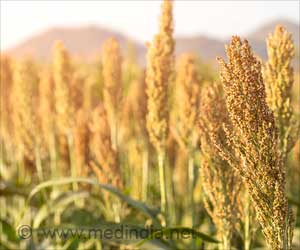Beyond feeding hunger, food banks should provide healthy foods to end hunger and health problems.

‘Implementing policies and strategies to promote nutrition and health in food banks can feed the hunger and improve access to healthy foods.’
Read More..




But until now, food banks have had few ways to evaluate those initiatives. Read More..
University of California, Davis, Assistant Professor of Cooperative Extension Cassandra Nguyen led a team of researchers to develop the Food Bank Health and Nutrition Assessment to address that concern. Their findings were published in the journal Public Health Nutrition.
“This tool will allow food banks to reflect on their current practices and determine whether they can adopt additional strategies to promote nutrition and health. It also serves as a benchmark, which they can use to track their progress over time,” said Nguyen, with the UC Davis Department of Nutrition.
Nutrition Policy is More Than What’s on the Shelf
Food banks face some common challenges in promoting nutrition, health and equity. While food banks could assess the nutritional quality of their inventory, Nguyen said promoting nutrition requires more than knowing the types of food on the shelf.“Food banks can have nutrition policies that outline where they source food and which foods they prioritize when funding is available. They can also ensure that food pantry clients are either represented on advisory boards or are able to provide feedback about foods they would like to receive,” Nguyen said.
Additionally, food banks can take steps to make sure nutrition education materials and information about federal assistance programs for health and nutrition are available in languages spoken by recipients.
Advertisement
The Food Bank Health and Nutrition Assessment was designed to evaluate these and additional objectives so food banks can identify areas of success as well as potential strategies they hadn’t considered before.
Beyond Hunger: Improving Access to Healthy Food
“By having data from this assessment to show that some practices to promote nutrition and health may be difficult to implement, several food banks can raise their voices to advocate for policy changes,” Nguyen said.The assessment is available for free through Feeding America, the largest nonprofit organization supporting the charitable food system, and online through the University of Illinois Extension. Food bank staff and partnering community-based professionals such as extension staff can use the assessment to improve promotion of nutrition and health.
Source-Eurekalert















